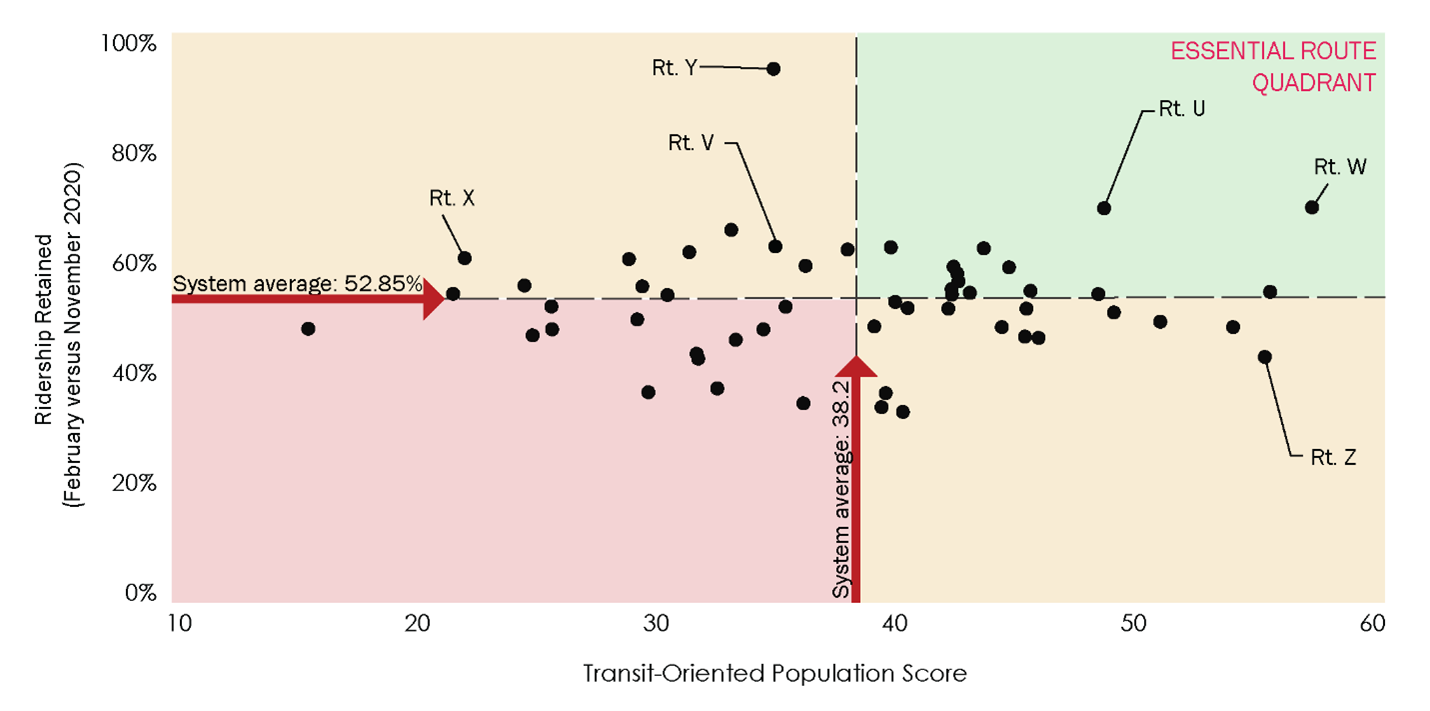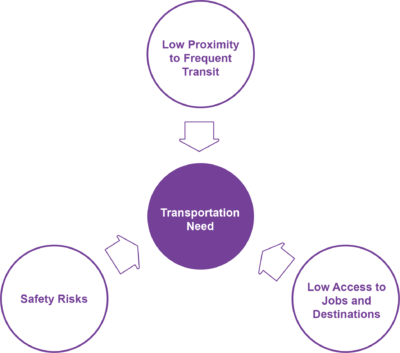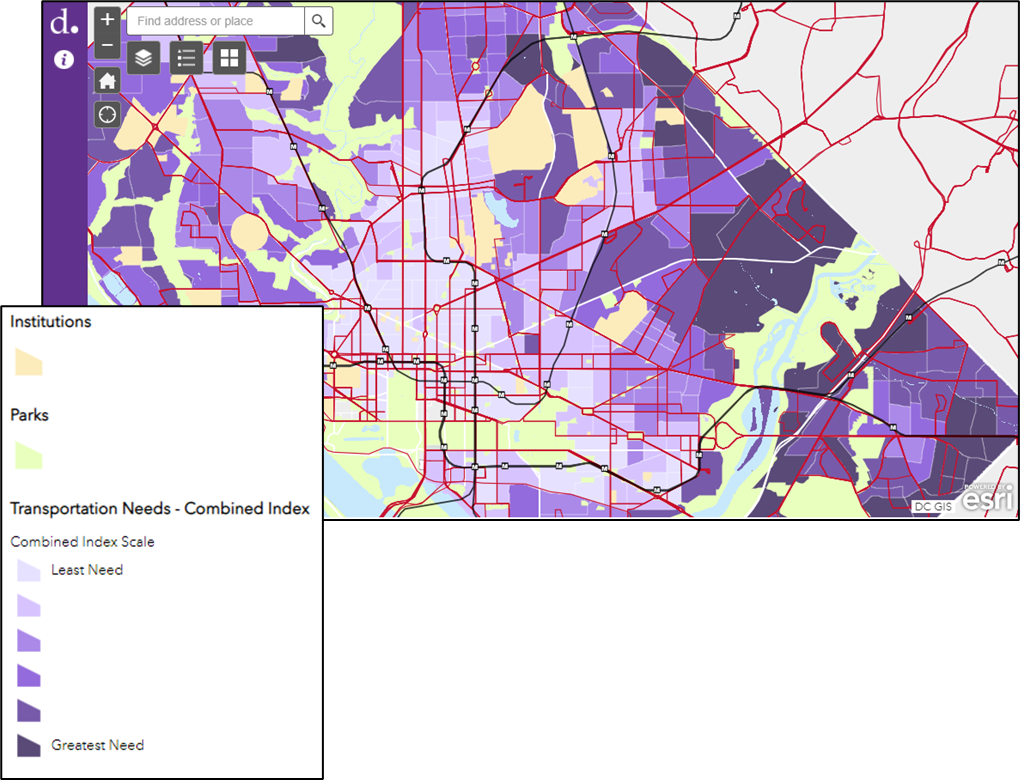Today is Transit Equity Day, a day to raise awareness that access to high-quality public transit is a civil right. Public transit is part of the essential fabric of communities, particularly as a means for many low-income, people of color, and immigrant populations to access jobs, healthcare, educational opportunities, and more. Since the onset of the COVID-19 pandemic, the importance of transit for these populations—many of them front-line and essential workers who depend on public transit—has been more pronounced. While overall transit ridership nationwide was down 65 percent year-over-year in July 2020, ridership on bus routes that serve primarily people of color and low-income communities, as well as major employers with essential workers, is down much less.
Foursquare ITP takes our work to improve transit in general, and specifically for transit-oriented and transit-dependent populations, very seriously. Improving access for those who need it most is a primary motivation for so many of us every day – and what got us interested in the industry in the first place. As we celebrate Transit Equity Day, Foursquare ITP is proud to highlight innovative analysis methods we’ve done in several cities that help transit providers determine where gaps might exist for these populations and where service must continue to grow to ensure access to jobs and other opportunities.
Keeping the “Most Essential” Bus Routes
For one transit agency trying to preserve service to riders that need it the most while facing financial headwinds due to the COVID-19 pandemic, we applied a route “essentialness” evaluation to compare the concentration of populations with a high transit need in each route’s service area to the level of ridership retained pre- versus post-pandemic. We measured the need for each bus route by creating a Transit-Oriented Population (TOP) score for each route based on characteristics of the route’s service area including residents without cars, senior citizens, people of color, and people in low-income households. Routes with above average TOP scores and above average ridership recovery were deemed most “essential” for maintaining or enhancing service on, while routes with below average TOP scores and ridership were most in need of service modifications. By identifying the routes most essential to the agency’s mission of providing service for residents who need it the most, Foursquare ITP helped the agency remain dedicated to equity-focused service while adapting to challenging financial conditions.

Prioritizing Equity in Long Range Planning

For the District of Columbia’s long-range transportation plan, moveDC, Foursquare ITP applied a transportation deficiency analysis that looked at where residents lack easy access to opportunities and face unsafe conditions on streets. Each Census block was scored on an index for transportation need that, when overlaid with data on various demographic characteristics like income and race, showed where key populations face deficiencies in the transportation network. By identifying where low-income, people of color, persons with disabilities, and residents with limited English proficiency lack access to key transportation services, the policies and strategies in the plan will address the needs of these populations so that the District’s transportation system continues to improve access and safety for its most vulnerable residents.
